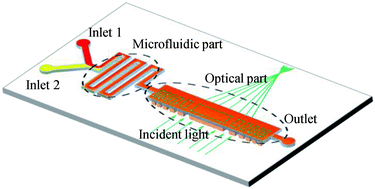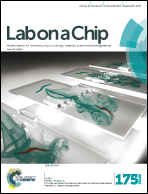Tunable focusing properties using optofluidic Fresnel zone plates
Abstract
A Fresnel zone plate (FZP) is a unique diffractive optical device and widely used in integrated optical systems such as interferometers and antennas. A traditional FZP utilizes solid materials and cannot be modulated in real time for desired focusing properties. This paper reports a tunable optofluidic FZP based on a solid–liquid hybrid structure. This FZP consists of two parts including a fast microfluidic mixer, which can adjust the refractive index of liquids from 1.332 to 1.432, and subsequently an optical FZP with a solid–liquid combination. Simulations and experiments successfully showed the real-time tunability of the focusing properties such as peak intensity, focal spot sizes and focal lengths. The focal spot size can be modulated from 16 μm to 80 μm at λ0 = 532 nm in experiments with focal length changes of approximately 700 μm. Moreover, it can be easily switched between focusing, defocusing and collimation. The dispersion with different wavelengths was also investigated, showing that these types of focusing properties are quite different from a traditional optofluidic lens by refraction or reflection. It is foreseeable that such a hybrid FZP may find wider applications in lab-on-a-chip systems and optical devices.


 Please wait while we load your content...
Please wait while we load your content...